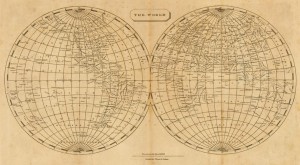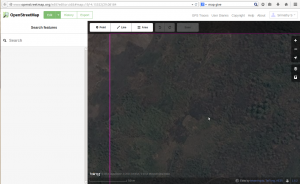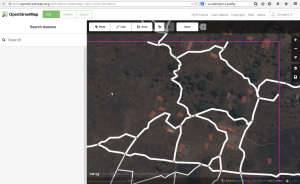 In the UK, we take it for granted that we will be able to find a certain place either by using a paper map, road signs or online route planners. However, there are many regions of the world where locating a whole town or village is a challenge because they don’t exist yet on maps. In fact, whole cities are ‘invisible’ because no one has ever bothered to map them. You may ask: why is this such a problem? Well, for people living in these ‘invisible’ cities, towns and settlements it really can be a matter of life and death, most especially when disasters, such as the current Ebola outbreak, strike and aid workers cannot find you.
In the UK, we take it for granted that we will be able to find a certain place either by using a paper map, road signs or online route planners. However, there are many regions of the world where locating a whole town or village is a challenge because they don’t exist yet on maps. In fact, whole cities are ‘invisible’ because no one has ever bothered to map them. You may ask: why is this such a problem? Well, for people living in these ‘invisible’ cities, towns and settlements it really can be a matter of life and death, most especially when disasters, such as the current Ebola outbreak, strike and aid workers cannot find you.
A challenge facing organisations working to bring relief to disaster-affected regions is locating the people who need their help. In 2010, after the earthquake and subsequent cholera outbreak in Haiti, Médecins Sans Frontières (MSF) were attempting to respond to a call from a nun in a remote village that was being ravaged by cholera but, because they only had the sketchiest of maps to work with, locating the nun’s village was immensely challenging. They did eventually arrive at the village (after travel by road and sea and passing numerous other inflicted villages en route), but this story highlights the difficulties aid organisations face in order to carry out their work. If they knew where all villages and towns were and the relative sizes of them, aid organisations would be able to better allocate their resources and reach more people.
The need for better maps is the driving force behind the MissingMaps project, a collaboration between MSF, the British and American Red Cross, the Humanitarian OpenStreetMap Team and other organisations, and the aim is to have an open source digital map of every single settlement in the world. MissingMaps is being touted as a ‘human genome project’ for cities.

On Friday 7th November, I attended – albeit remotely – the MissingMaps party organised by Guardian Cities to map the city of Baraka in the Democratic Republic of Congo. Before I continue, I must point out that I am not a computer geek, and the beauty of the MissingMaps project is that you do not need to be one to help. So, armed with a laptop and an OpenStreetMap account, I embarked on my first ever mapping project. A grid was laid over a satellite image of Baraka and each of the attendees got to work on mapping roads, buildings and other features of the city in our assigned grid tile(s).

I must say, I found mapping rather addictive and did not notice that three hours had flown by whilst I contributed to three or four tiles, but even after a few hours, Baraka was ’emerging’ before my eyes. The mapped grids will now be verified ‘on the ground’ by volunteers before road and place names are uploaded to the OpenStreetMap.
The MissingMaps party was a coordinated event, but you do not need to wait for such events to map – just go to MapGive, learn to map using their easy to follow tutorial and then select a mapping task at any time.
These maps will vastly help humanitarian aid efforts during disease outbreaks (such as the current Ebola outbreak) and in the aftermath of natural disasters, but they could also prove useful to local medical teams, researchers and organisations who work in (currently) unmapped regions on a daily basis.

Comments